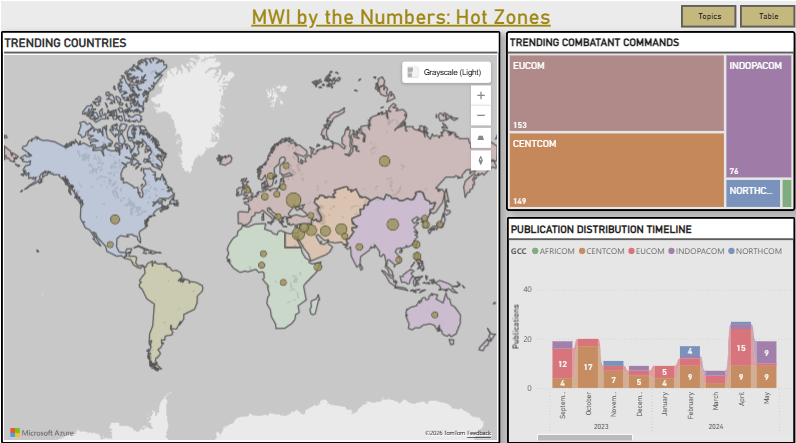Editor’s note: Welcome to another installment of our weekly War Books series! The premise is simple and straightforward. We invite a participant to recommend five books and tell us what sets each one apart. War Books is a resource for MWI readers who want to learn more about important subjects related to modern war and are looking for books to add to their reading lists.
This week’s installment of War Books comes from Dr. Heather Venable, an associate professor of military and security studies at the Air Command and Staff College and an MWI research fellow. We gave Dr. Venable the following prompt: What five books would you recommend to Army readers to better understand the role of airpower in war?
Overlord: General Pete Quesada and the Triumph of Tactical Air Power in World War II, by Thomas Hughes
This biography of Army Air Forces officer General Pete Quesada is a perennial student favorite at Air Command and Staff College. The work highlights Quesada’s leadership and adaptation during World War II, particularly highlighting how he improved air-ground cooperation. As this mission has frequently been a tense one between the Army and the Air Force, it is worth appreciating how well both sides learned to work together effectively, thereby contributing significantly to the defeat of Germany.
How the War Was Won: Air-Sea Power and Allied Victory in World War II, by Phillips O’Brien
For a very different vantage point of how airpower contributed to the defeat of Germany and Japan, Phillips O’Brien makes the highly revisionist and fascinating argument that there were no decisive land battles in World War II. Army readers will find this this contrarian statement ranging from intriguing to downright nonsensical. Keep turning the pages. O’Brien is a masterful scholar who makes a compelling case for how air and sea power attrited the German and Japanese militaries. One need not accept his argument regarding decisive land battles to appreciate how much airpower can contribute off the battlefield to what is occurring on the battlefield. Airpower need not be directly overhead to be highly useful in supporting the ground fight.
History of Air Warfare, edited by John Andreas Olsen
This excellent overview of air warfare provides brief historical case studies from World War I to Operation Allied Force, with almost every chapter written by a foremost airpower scholar. Although there is one instance (the chapter on Operation Iraqi Freedom) in which an exclusive focus on Marine aviation presents an incomplete picture, on the whole the reader can be assured of thoughtful analysis of the book’s case studies.
(Bonus book: If you prefer a similar approach to air warfare but focused on more recent campaigns, substitute Airpower in the Age of Primacy, edited by Phil Haun, Tim Schultz, and Colin Jackson.
The Air War in Vietnam, by Michael Weaver
This highly dense book provides thoughtful analysis about airpower with detailed treatment of various airpower missions. The result of meticulous research, this book provides soldiers with a thorough and comprehensive understanding of airpower employment. Although airpower’s capabilities and limitations have changed significantly since the Vietnam War, the actual ideas underpinning airpower employment are far more consistent, making this book highly relevant to understanding airpower today.
Tactical Air Power and the Vietnam War: Explaining Effectiveness in Modern Air Warfare, by Phil Haun
A retired A-10 pilot and political scientist provides a useful model for successful air-ground operations focused largely on the Vietnam War. He argues that airpower is most successfully employed by working together with landpower close to the battlefield. This has not been the Air Force’s historical preference for a number of reasons, however. While he makes a compelling case for the utility of what he calls battlefield air interdiction, it is important to note that more traditional interdiction has been incredibly successful at times, especially by striking ships both in the southwest Pacific and in the Mediterranean during World War II. The author concludes the work with the application of his theory to far more recent conflicts, including the Russo-Ukraine War.
Dr. Heather Venable is an associate professor of military and security studies at the Air Command and Staff College, where she serves as course director of Airpower Strategy and Operations, and an MWI research fellow.
The views expressed are those of the author and do not reflect the official position of the United States Military Academy, Department of the Army, or Department of Defense.
Image credit: R. Nial Bradshaw, US Air Force


